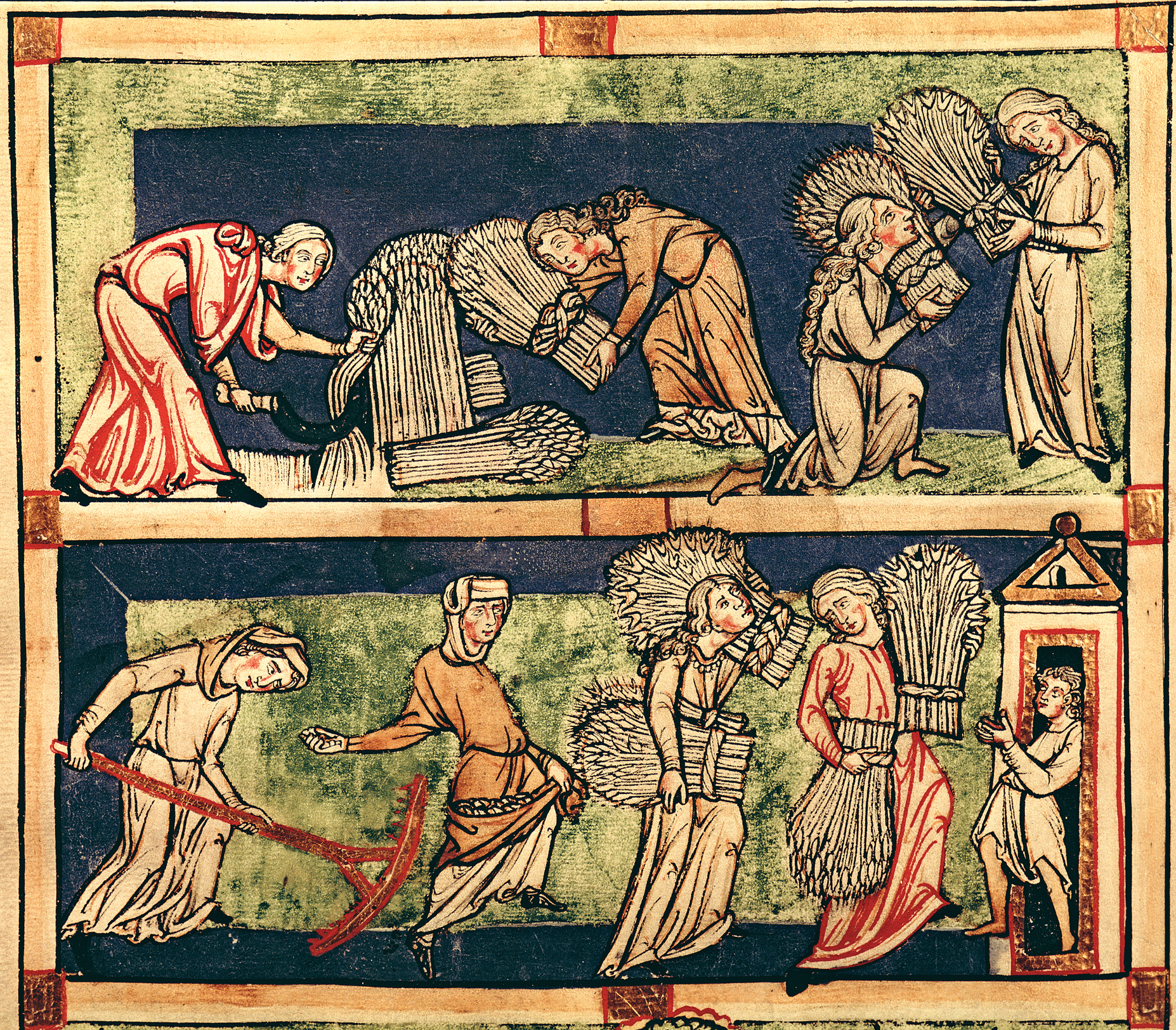A History of World Societies:
Printed Page 405
A History of World Societies Value
Edition: Printed Page 403
The Life and Work of Peasants
The men and women who worked the land in medieval Europe made up probably more than 90 percent of the population, as they did in China, India, and other parts of the world where agriculture predominated. The evolution of localized systems of authority into more centralized states had relatively little impact on the daily lives of these peasants except when it involved warfare. While only nobles fought, their battles often destroyed the houses, barns, and fields of ordinary people, who might also be killed either directly or as a result of the famine and disease that often accompanied war. Villagers might seek protection in the local castle during times of war, but typically they worked and lived without paying much attention to political developments within castle walls.
At the same time, since villagers did not perform what were considered “noble” deeds, the aristocratic monks and clerics who wrote the records that serve as historical sources did not spend time or precious writing materials on them. So it is more difficult to find information on the majority of Europeans who were peasants than on the small group at the top of society.

Medieval theologians lumped everyone who worked the land into the category of “those who work,” but in fact there were many levels of peasants, ranging from slaves to free and sometimes very rich farmers. Most peasants were serfs, required to stay in the village and perform labor on the lord’s land. The number of workdays varied, but serfs usually worked three days a week except in the planting or harvest seasons, when the number of days increased. Serfs were also often obliged to pay fees on common occurrences, such as marriage or inheritance of property. A free person had to do none of these things.
Serfdom was a hereditary condition. A person born a serf was likely to die a serf, though many serfs did secure their freedom, and the economic revival that began in the eleventh century (see “Towns, Cities, and the Growth of Commercial Interests”) allowed some to buy their freedom. Further opportunities for increased personal freedom came when lords organized groups of villagers to migrate to sparsely settled frontier areas or to cut down forests or fill in swamps so that there was more land available for farming. Those who took on this extra work often gained a reduction in traditional manorial obligations and an improvement of their social and legal conditions.

In the Middle Ages most European peasants, free and unfree, lived in family groups in small villages that were part of a manor, the estate of a lord (see “Feudalism and Manorialism”). The manor was the basic unit of medieval rural organization and the center of rural life. Within the manors of western and central Europe, villages were made up of small houses for individual families, a church, and perhaps the large house of the lord. Peasant households consisted of one married couple, their children (including stepchildren), and perhaps one or two other relatives, such as a grandparent or unmarried aunt. In southern and eastern Europe, extended families were more likely to live in the same household or very near one another. Between one-
The arable land of the manor was divided between the lord and the peasantry, with the lord’s portion known as the demesne (dih-
The peasants’ work was typically divided according to gender. Men and boys were responsible for clearing new land, plowing, and caring for large animals; women and girls were responsible for the care of small animals, spinning, and food preparation. Both sexes harvested and planted, though often there were gender-
The mainstay of the diet for peasants everywhere — and for all other classes — was bread. Peasants also ate vegetables; animals were too valuable to be used for food on a regular basis, but weaker animals were often slaughtered in the fall so that they did not need to be fed through the winter, and their meat was preserved with salt and eaten on great feast days such as Christmas and Easter. Ale was the universal drink of common people, and it provided needed calories and some relief from the difficult and monotonous labor that filled people’s lives.